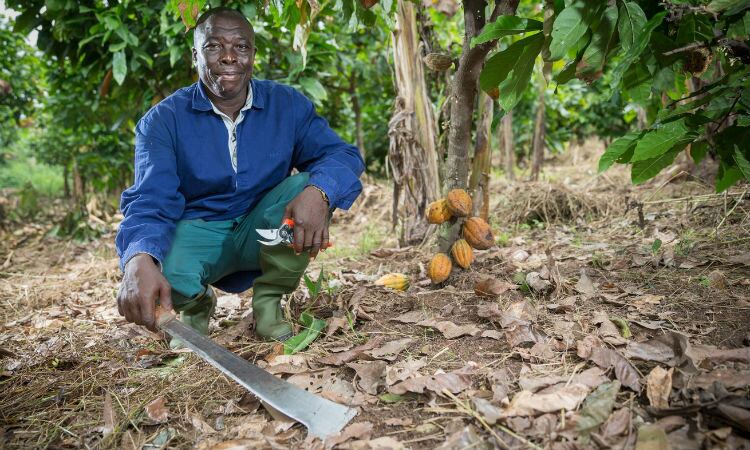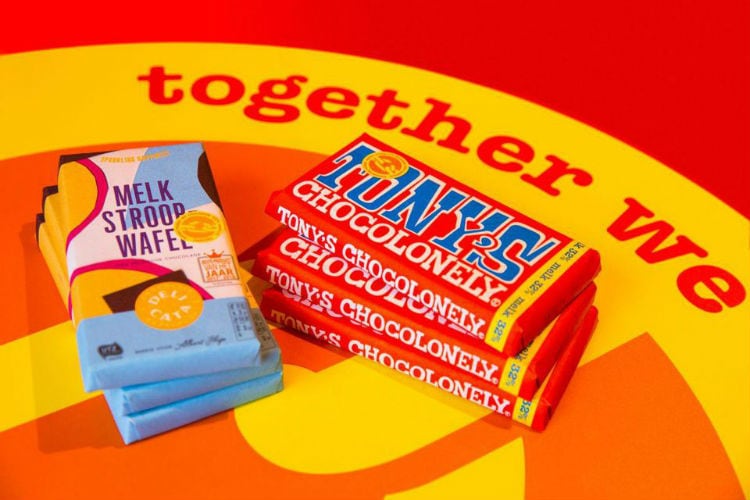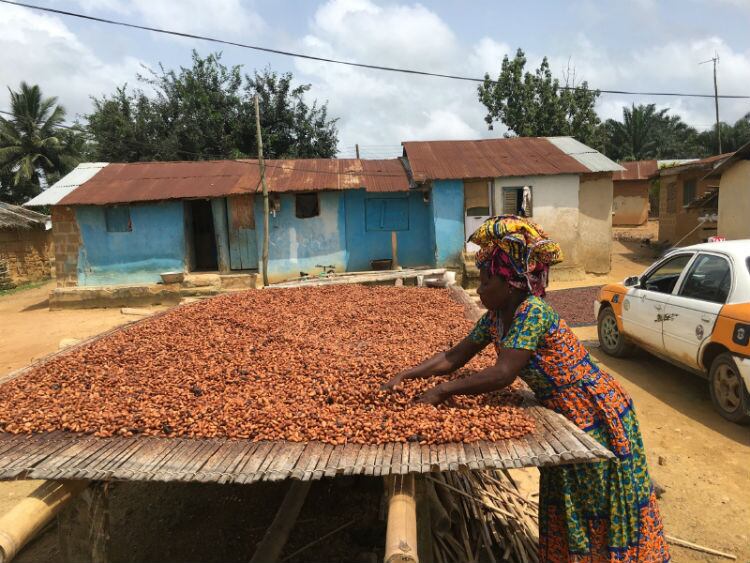The group’s Forever Chocolate Progress Report 2017/18 lists the progress it has made towards its target of ‘making sustainable chocolate the norm by 2025’.
Pablo Perversi, the group’s chief innovation, sustainability and quality officer, told Confectionery News in an exclusive interview, he is very confident of meeting the target, set out by its own voluntary sustainable certification program, which was launched two years ago.
Forever Chocolate is based on four ambitious targets, to be achieved by 2025, that the group says addresses the largest sustainability challenges in the chocolate supply chain.
1. Lift more than 500,000 cocoa farmers out of poverty.
2. Eradicate child labor from its supply chain.
3. Become carbon and forest positive.
4. Have 100% sustainable ingredients in all its products.
CEO Antoine de Saint-Affrique said: “With now 44% of our ingredients coming from sustainable sources, we are well on track to make sustainable chocolate the norm by 2025. Through our sourcing, processing and sales, we are driving change, supporting cocoa farming communities and driving the uptake of sustainably sourced chocolate”.
Sustainable chocolate
The group said it sourced 44% (2016/17: 36%) of cocoa beans through sustainability programs. This percentage includes the Barry Callebaut’s Cocoa Horizons program, as well as its customers’ own programs and external certification such as UTZ Certified, Rainforest Alliance, Fairtrade and Organic.
Furthermore, claims the report, Barry Callebaut sourced 44% (2016/17: 30%) of its non-cocoa agricultural raw materials sustainably. This includes the use of sustainability certification schemes for the respective ingredients.
Lift more than 500,000 cocoa farmers out of poverty
In order to lift more than 500,000 farmers out of poverty, Barry Callebaut announced it is building datasets with detailed location, agronomic, economic and social survey data on the cocoa farms in its supply chain.
BC's milestones in fiscal year
- 44% of cocoa beans and 44% of other chocolate ingredients sourced through sustainability programs
- Over 130,000 farms mapped
- Over 2.1 million young cocoa seedlings and around 400,000 shade trees distributed
- 24% of the Group’s factories powered by renewable energy
“Our databases are hugely important,” said Perversi. “When you have a dataset that understands where they [the farmers] are, it can help them best to improve their productivity and improve their situation, and have a much better understanding of the impact that you are generating.”
These unique datasets allow Barry Callebaut to ensure the mapped cocoa farms are not located in protected forest areas. In addition, they allow the group to create tailormade sustainability programs to help address the key issues of the mapped cocoa farming communities, including diversifying their incomes, the Progress Report claims.
Eradicating child labor
With the support of ICI, Barry Callebaut says it continues to implement monitoring and remediation systems designed to eradicate child labor. Through these joint projects, Barry Callebaut established that, in 2017/18, 12% (2016/17: 3.2%) of the farmer groups it directly sources from in Côte d’Ivoire and Ghana have systems in place to prevent, monitor and remediate child labor. The monitoring uncovered 4,230 cases of the worst forms of child labor, in all cases children working on their family’s farm. This increase is the result of the coverage of a broader range of farmer groups. All cases of worst forms of child labor the group found are being remediated, the report states.
Carbon and forest positive
The Barry Callebaut carbon footrprint from farm to customer was 9.1 million tonnes CO2e in 2017/18. This is an increase of +4.6%2 mostly due to an increase in the production of chocolate and cocoa products. The CO2e intensity per tonne of average product slightly decreased to 4.45 tonnes (1.5%2 ) in 2017/18, due to energy saving measures in the group’s factories and transport operations. Of the group’s factories, 14 out of 59 (24%) are now running on 100% renewable energy, it says.
Sustainable ingredients
In the Progress Report, Barry Callebaut says it has created a heatmap to provide an overview of the geographical footprint of the raw materials the group sources that are at risk of causing deforestation. On the basis of this heatmap, the group says it is assessing which additional safeguard measures, in addition to the safeguards provided by certification, such as farm mapping, have to be put in place to prove that these commodities are free from deforestation.
After the release of the Forever Chocolate Progress Report to the media, Perversi spoke more widely on sustainability issues to Confectionery News.
“Lifting farmers out of poverty involves many things, including not only what we do in helping farmers improve their productivity, because that is the one thing that is within our control, but it also includes taxes that the governments are charging, for example. It also includes the way in which the farmers rent or sub-rent land from owners and it includes their social recognition, regards civil rights,” he said.
Diversify income
Perversi said Barry Callebaut is working to lift farmers out of poverty through its Farm Services business. He said the group supported cocoa farmers in replanting 281 hectares with young cocoa trees, as well as other crops that provide shade, and are helping cocoa farmers to diversify their income.
“It's a joint effort, it's not something that we can do on our own to bring people out of poverty, and when you actually look at what happens around the world, if you compare cocoa farmers in Ecuador to Ghana, for example, what you also find, despite the fact that the price for cocoa is the same around the world, the situation of the farmers is radically different.”
Perversi, who took up his current role in September 2017, moving from an executive position at Unilever, said the question regarding famer poverty was “why is it that, when we have the same price for cocoa on the market, farmers in different places have different livelihoods”?
He recognizes that of course, conditions in producer countries are different, but the first thing you notice is that, where farmers have better livelihoods, their productivity is much higher.
Perversi said average productivity in farms/small landholders in Africa is 300kgs per farm, in places like Ecuador, it’s more like 2.5 tons per farm, in effect, productivity is 10 times higher in Latin America.
Pleased with progress
“If a farmer earned 10 times more [in West Africa], we would already have a lot of farmers out of poverty,” he said.
Although pleased with progress, Perversi also said there is still a lot to do in eradicating farmer poverty.
Speaking about the cocoa industry in general, Perversi thinks great progress is happening regarding sustainability and key stakeholders are moving in the same direction.
“We've had many years of sustainability where people weren't necessarily joined at the hip in terms of what they understood about sustainability in order to move the needle. I think that if we work together on this, there is much more we can do, from the industry, governments, NGOs, agencies and programs like the WCF’s CocoaAction.”
Since its inception, and because Barry Callebaut is the world’s leading manufacturer of high-quality chocolate and cocoa products, Forever Chocolate has given the group a steer on leading a movement to bring about a systemic change to cocoa farming.
“We don't just keep everything to ourselves; we are trying to work in the best interests of the industry and the farmers so that we can all progress. More than 130,000 farms have already been mapped. All of this we are sharing, and this has encouraged others to geomap - and as a result, we are hoping that can elevate everyone with us,” said Perversi.




